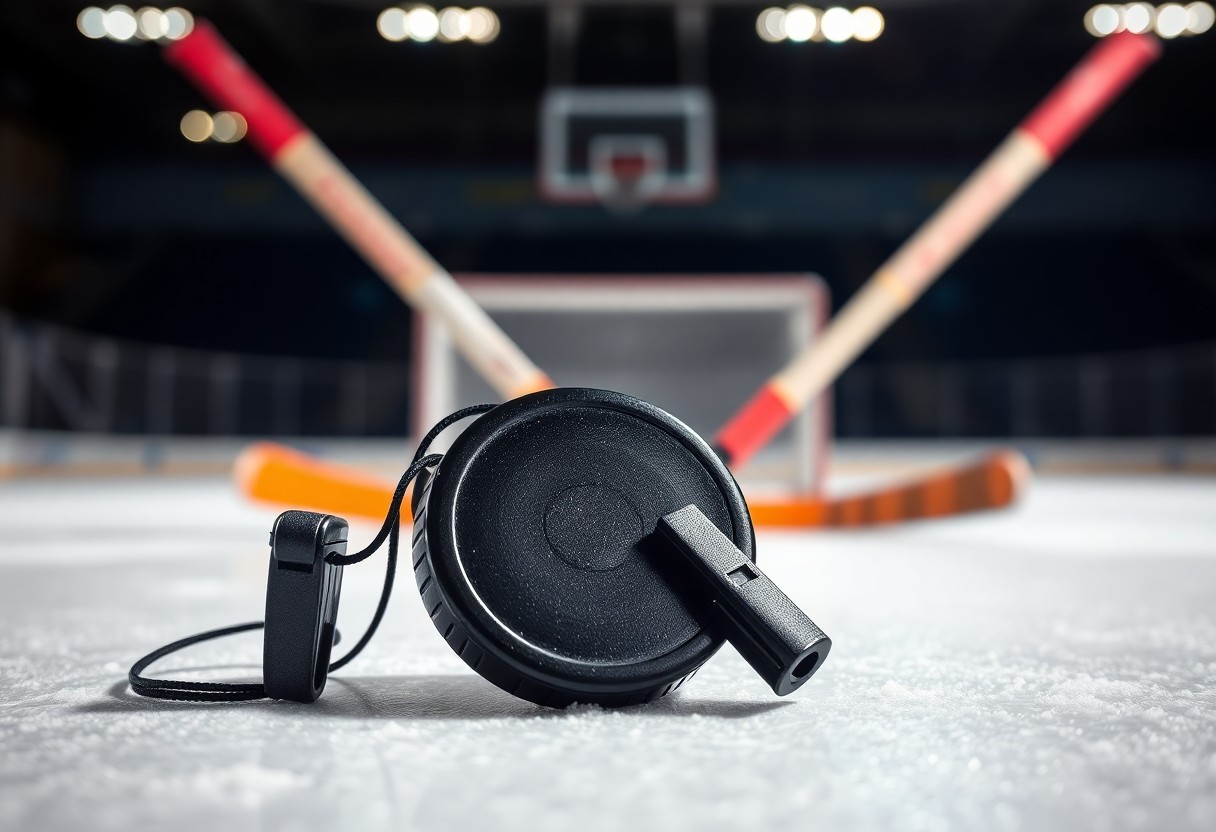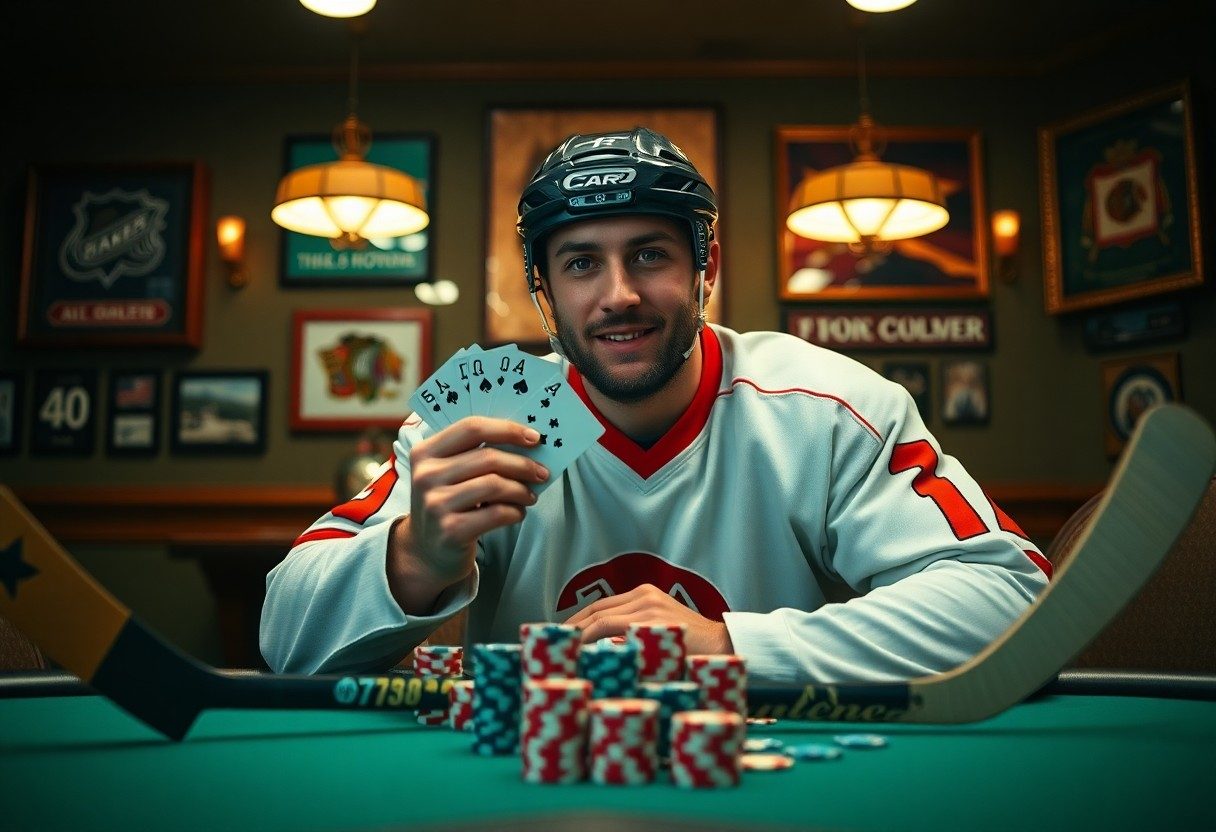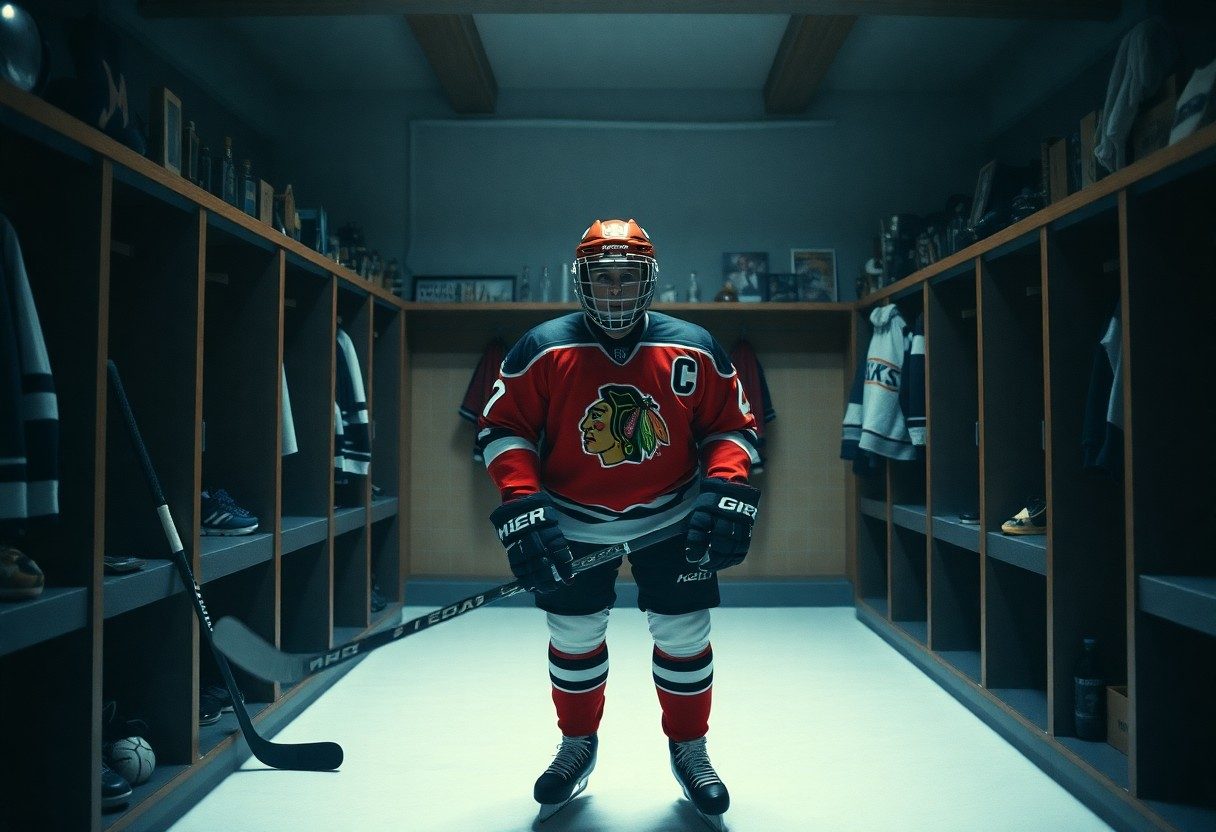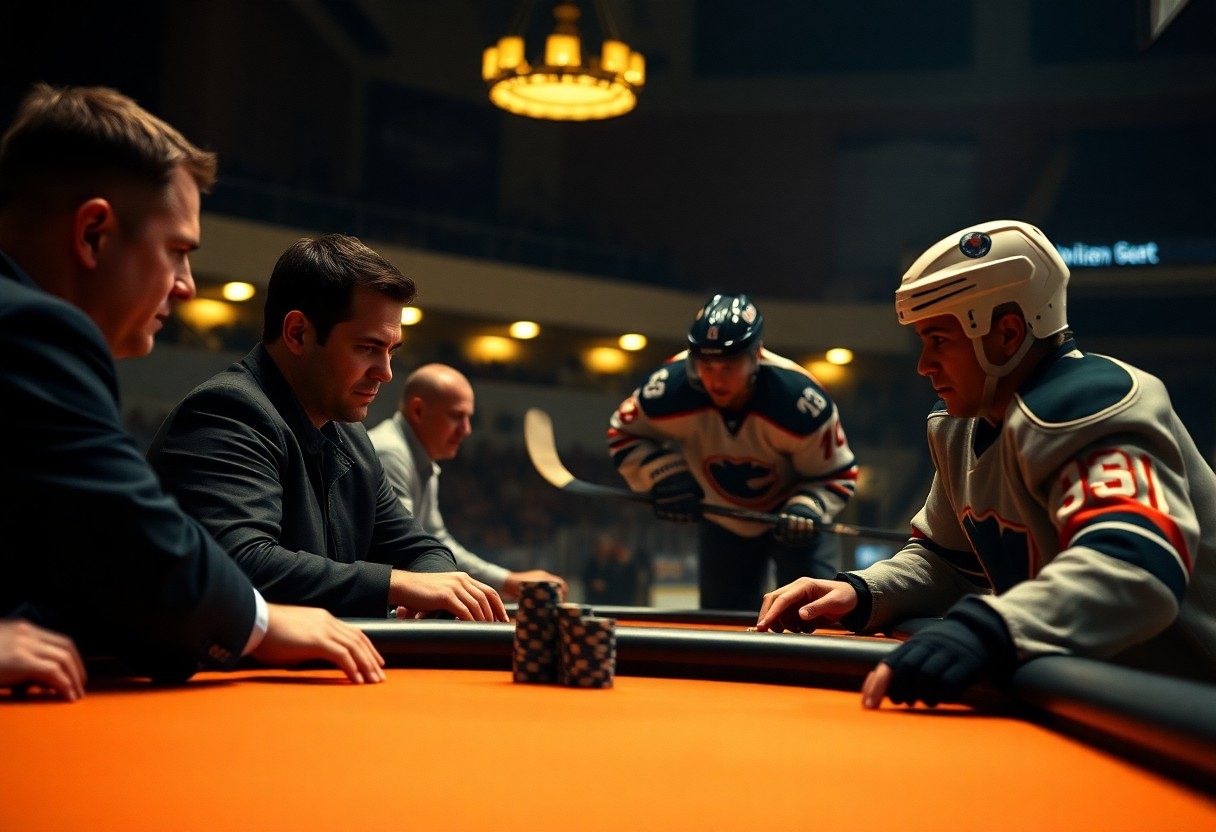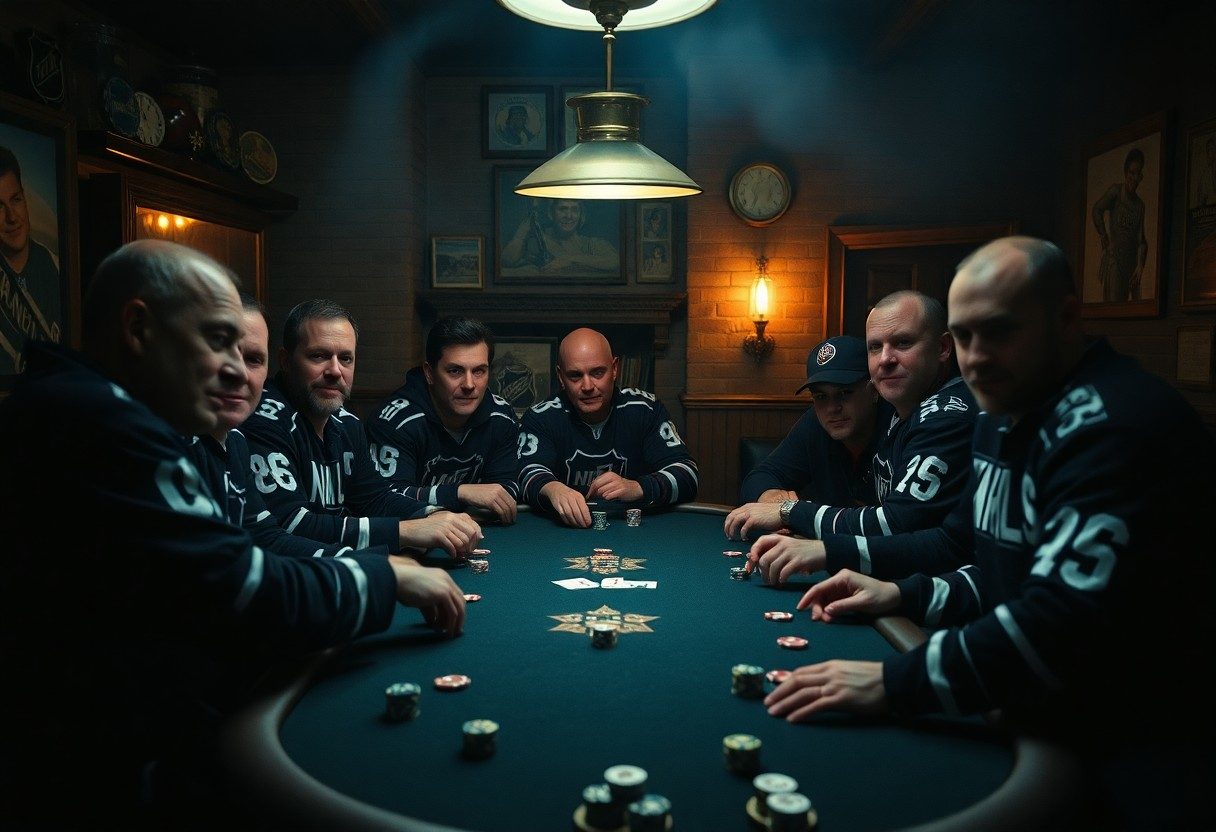Strategy is key when it comes to mastering the faceoff in hockey, as it can set the tone for the entire game. By understanding the techniques and mental aspects involved, you can enhance your ability to gain possession right from the start. In this blog post, you’ll learn about the various types of faceoffs, effective positioning, and the importance of anticipating your opponent’s moves, all of which are vital for asserting control during this critical moment on the ice.
Understanding the Faceoff
A faceoff is an imperative aspect of ice hockey that sets the tone for play. It occurs at the beginning of each period and after stoppages, serving as a battle for possession of the puck. Knowing how to execute a successful faceoff can significantly influence your team’s performance. Understanding the strategies and techniques involved enables you to gain an advantage right from the start, ensuring your team is better positioned to control the game.
The Importance of Positioning
Faceoff positioning is vital for gaining an edge in battle. Your stance should be low and balanced, allowing quick movement in any direction. Aligning your body correctly not only gives you leverage over your opponent but also prepares you to react swiftly once the puck drops. Additionally, anticipating your opponent’s movements can offer you an advantage, making it imperative to be mindful of their positioning as well.
Timing and Anticipation
On the ice, timing and anticipation play significant roles in successful faceoffs. It’s not just about being the strongest; it’s about being the smartest. You need to gauge the referee’s movements and predict when the puck will be dropped to react quickly and effectively. By analyzing your opponent’s body language and tactics, you can position yourself advantageously, increasing your chances of winning the faceoff.
And mastering the art of timing involves constant practice and keen observation. The more you understand the flow of the game and how opponents react to faceoff situations, the better prepared you’ll be. Anticipating the moments before the puck drop allows you to surge forward with precision, while effectively reading the player’s intentions helps you outmaneuver them right at the start. These skills can be developed over time, enabling you to enhance your overall faceoff success significantly.
Techniques for Winning the Faceoff
It is imperative to master specific techniques that will greatly enhance your ability to win faceoffs in hockey. Developing these skills can give you a significant advantage over your opponent from the initial drop of the puck. By focusing on grip, stick control, body positioning, and proper leverage, you can increase your chances of gaining possession and setting the tone for your team right from the start of the game.
Grip and Stick Control
Along with technique, your grip on the stick is fundamental when executing a successful faceoff. A strong grip allows for better control and energy transfer during the faceoff. Ensure your dominant hand is placed on the top of the stick, while your other hand supports the bottom, providing necessary balance and maneuverability.
Body Position and Leverage
Techniques for body position and leverage are vital for winning a faceoff. It involves understanding how to use your weight and positioning effectively against your opponent. Start by placing your feet shoulder-width apart for stability, while lowering your hips to create a strong base. Angle your body toward the puck drop, as this will help you react quicker and use your leverage to gain an upper hand during the faceoff.
It is also important to anticipate the referee’s drop of the puck. When you feel the tension building, adjust your position slightly to gain a quick advantage. Maintaining a low center of gravity not only provides balance, but it also enables you to push off effectively against your opponent, maximizing your leverage and increasing the likelihood of winning the puck. Being fluid in your movements while maintaining proper stance lets you adapt seamlessly to any situation that arises during the faceoff.
The Role of Strategy in Faceoffs
Now, mastering the faceoff involves much more than sheer strength; strategy plays a pivotal role in determining the outcome. Understanding the mechanics behind your opponent’s actions and anticipating their moves can dramatically increase your chances of gaining possession. By employing effective strategies, you can dictate the pace of the game right from the opening faceoff, setting the stage for your team’s success.
Reading Opponents
Above all, honing your ability to read opponents can provide you with valuable insights during faceoffs. Observing their stances, hand placement, and even their eye movements can offer hints about their intended maneuvers. This knowledge allows you to react swiftly and position yourself advantageously, ultimately giving you the upper hand in securing the puck.
Team Coordinations and Set Plays
Among the various aspects to consider in faceoffs, team coordination and set plays are vital for maximizing your effectiveness as a group. Effective communication and pre-planned strategies among your teammates enable you to execute specific movements designed to win the puck and establish control.
Hence, implementing set plays during faceoffs can significantly enhance your team’s performance. By developing a cohesive plan that involves multiple players, you can outmaneuver your opponents while increasing your chances of winning possession. Whether it’s a staggered approach or an immediate follow-up play, coordinating your actions with your teammates ensures that you are all on the same wavelength, making it harder for the opposing team to predict and counter your strategy. This teamwork in the faceoff circle can prove to be the deciding factor in many crucial moments of the game.
Common Mistakes to Avoid
For those looking to improve their faceoff skills, avoiding common pitfalls can make a significant difference. Many players make mistakes like overcommitting or losing focus on the puck, which can lead to a lost possession right from the start. Being aware of these mistakes allows you to fine-tune your approach and gain the upper hand during faceoffs. Aim to stay sharp and mindful during every game situation, ensuring that you maximize your chances of winning the puck.
Overcommitting
For many players, the instinct to overcommit during a faceoff can lead to premature movements that throw off their balance. When you lean too far forward or make aggressive moves before the puck drops, you risk losing both your position and the faceoff itself. Staying calm and composed is key to maintaining an advantageous stance and making smarter decisions as the puck is played.
Losing Focus on the Puck
About the faceoff, your first priority should always be the puck itself. Losing sight of the puck can significantly diminish your chances of success. If your attention drifts, you’ll find yourself reacting slower to your opponent’s movements and might miss the opportunity to win possession. Keeping your eyes locked on the puck during the crucial moment of the faceoff will help you stay alert and ready to capitalize on any opportunity.
And when you maintain your focus on the puck, you enhance your ability to anticipate your opponent’s actions. This heightened awareness allows you to read the play more effectively and react swiftly, whether that means snapping your stick into the perfect position or using a strategic play to secure the puck. By keeping your mind centered on the puck, you equip yourself with the tools needed to dominate the faceoff circle.
Training Tips for Faceoff Success
To enhance your faceoff skills, focus on key training techniques that can elevate your game. Utilize these tips to create consistency in your performance:
- Practice different faceoff stances.
- Incorporate strength and conditioning exercises.
- Develop quick hand-eye coordination drills.
- Analyze video footage of successful faceoff specialists.
- Work on timing and anticipation skills.
Any effective training regimen will include a mix of physical and cognitive preparation to ensure you’re ready for battle at the puck drop.
Drills to Improve Technique
After mastering the basics, incorporate specific drills to hone your faceoff technique. Partner with a teammate to simulate game scenarios, focusing on winning the draw while protecting the puck. Experiment with various grip styles, and regularly practice your follow-up moves to secure possession and pass the puck effectively.
Mental Preparation
Mental warm-up is just as important as physical training. You should visualize yourself winning faceoffs under pressure, creating a positive mindset that translates to confidence when you step onto the ice.
Improve your focus by practicing mindfulness techniques that help you stay calm and composed during crucial moments. Spend time analyzing your previous faceoff performances to identify areas for growth. Use this information to reinforce your strategies and prepare mentally for different opponents, creating a tailored game plan that suits your style for each matchup.
The Impact of Faceoff Wins on Game Outcomes
Keep in mind that winning a faceoff can set the tone for the entire game. Gaining possession from the start allows your team to dictate the pace, control play, and create scoring opportunities, ultimately influencing the outcome. A team that excels in faceoffs often finds itself with a strategic advantage, leading to higher success rates throughout the match.
Statistics and Analysis
On the surface, faceoff wins may seem like just a small piece of the puzzle, but statistical analyses reveal their profound effect on game dynamics. Teams with a higher faceoff win percentage generally see improved overall performance and an increase in scoring chances, highlighting the importance of skillful execution at the dot.
Momentum Shifts in Gameplay
Behind every successful game strategy lies the concept of momentum, which can pivot dramatically based on faceoff wins. Teams that consistently secure the puck through faceoffs often ride a wave of confidence, while their opponents may struggle to regain their footing.
Hence, momentum shifts can play a significant role in gameplay. When you win a faceoff, you not only gain possession but also energize your team, creating a sense of urgency and confidence. This psychological edge can lead to faster offensive plays and more cohesive defensive strategies, making it harder for the opposing team to mount a successful comeback. A string of faceoff victories can demoralize your opponent and elevate your performance, proving that winning at the dot has a ripple effect throughout the match.
To wrap up
To wrap up, mastering the art of the faceoff can significantly enhance your team’s chances of gaining possession right from the start. By focusing on your technique, strategy, and mental preparation, you can develop the skills needed to outmaneuver your opponent. Practice is key; spend time refining your stance, grip, and timing. Analyze your opponent’s tendencies to anticipate their moves. With dedication and attention to detail, you can turn the faceoff into a pivotal moment for your team, setting the stage for success throughout the game.









